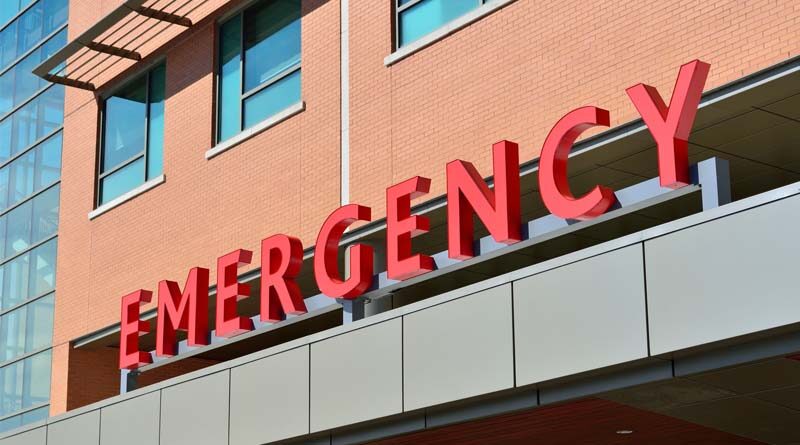Improving Post-COVID Healthcare Facilities for the Next Emergency
By Scott Cormier
First identified in the U.S. in January 2020, the coronavirus has created massive changes in the country, as cases skyrocketed from single digits to millions in a matter of months. Global emergencies such as the coronavirus often strike without warning, leaving many hospitals and healthcare providers scrambling for solutions.
When the pandemic hit, facilities’ operations and emergency management plans had to be quickly adapted to the new disease. The crisis challenged hospitals to develop new approaches to manage population health and services when time, money and resources became scarce. As stay-at-home orders lifted and states began to reopen, some as early as mid-April, hospitals were faced with a “new normal” and a new task: What do we do now to continue fighting this pandemic, how do we ensure the health of our patients outside of COVID, and how can we be more prepared for the next crisis?
It’s crucial that hospitals and healthcare facilities across the country learn how to adapt and thrive now, to be ready for when, not if, this happens again. Below are three steps your facility can take into action today to plan for tomorrow.
Implement emergency management and frequently update plans.
Having a well-established emergency management (EM) program lays the foundation for successfully addressing any unexpected crises. Planning for, responding to, and recovering from a crisis is a multi-disciplinary effort, and an EM program’s and team’s strength is in the ability to help a facility through coordinating responses, planning through the disaster, and maintaining safety in times of uncertainty.
Investing time and money into emergency management is often falsely associated strictly with revenue depletion or merely a regulatory requirement, which can cause some hospitals to implement a program with little resources or support. Additionally, sometimes hospitals may be tempted to tuck it under another hospital leader’s already full task list or relegate it to an inexperienced individual. But failing to dedicate the time and resources to this essential function can be detrimental when disaster hits.
Emergency management is more than just regulations. It also involves the expertise developed through planning and implementation, and the relationships built at the local, state, national and even global level. To create a successful program, it’s important not to create one with the goal of just meeting minimum regulatory requirements or saving money, but rather to ensure all facilities are prepared to serve their communities during great times of need. Those that implement a comprehensive EM program in their facility improve their overall environment and will be more prepared to serve their patients and their community in the long run.
Establish a diverse team of experts.
Take your facility’s preparedness one step further by having the EM team designate an additional group of subject matter experts to tackle problems both within the facility and the multi-system organization as a whole. With this team, members can prepare guidance and navigate communication channels as they act as a liaison between the EM team, patients and staff. It’s important to gather top experts in a variety of fields – engineering, EM, operations, technology, construction, facilities management and more – to ensure all bases are covered within your facility.
Working in a variety of fields means the experts will be able to monitor facilities’ activity and adapt quickly to any situation in real-time during an emergency. This diverse team can collaborate and create solutions for what facilities need to do to adjust processes and programs to ensure safety. Maintaining this team even after the current emergency is crucial. Set up quarterly meetings with this group of experts to collaborate on and update existing plans, discover new resources and inspire fresh ideas for the EM team.
Pivot all plans, operations and processes.
It’s a much more seamless process when a plan is proactively developed before disaster strikes, as opposed to reacting and creating an emergency plan after it has already occurred. By pivoting standard processes and procedures to fit a pandemic and post-pandemic era, patients are able to recover without the disease continuing or spreading to other areas of the hospital. Many hospitals were caught off guard by trying to strengthen their EM program or cache of supplies after COVID arrived, and proved that it was difficult, if not impossible, to catch up.
Shifting a hospital’s operational plans, processes and programs isn’t an easy task, especially in the middle of a global pandemic. Some operational tasks that can change include building additional negative pressure rooms to care for confirmed or suspected patients, establishing mobile screening sites to meet patients where they are, and working with partners outside of the healthcare market to procure a robust supply chain (including PPE, air scrubbers, mobile morgues, emergency tents and more) that may be difficult to find in the middle of an emergency.
Infrastructure changes should also be carefully evaluated, such as adding plexiglass shields, reconfiguring crowded lobbies into socially distanced spaces or building new ways to direct foot traffic. Increased signage will also become the norm, in addition to advanced cleaning measures and temperature screening for employees and visitors. These changes in plans will be just a few of the ways that facilities will need to adapt to improve their environments for the future.
Final thoughts.
While we can’t know when COVID-19 will be cured or when the next crisis will happen, emergency management is vital year-round. Implementing a formal and structured EM program and frequently updating plans, collaborating with a team of experts, and pivoting operations to a “new normal” will help facilities be prepared today, tomorrow, and throughout the future.
Scott Cormier is the Vice President of Emergency Management, Environment of Care (EOC) and Safety at Medxcel, specializing in facilities management, safety, environment of care, and emergency management; he provides healthcare service support products and drives in-house capabilities, saving and efficiencies for healthcare organizations that, in turn, improve the overall healing environment for patients and staff.

